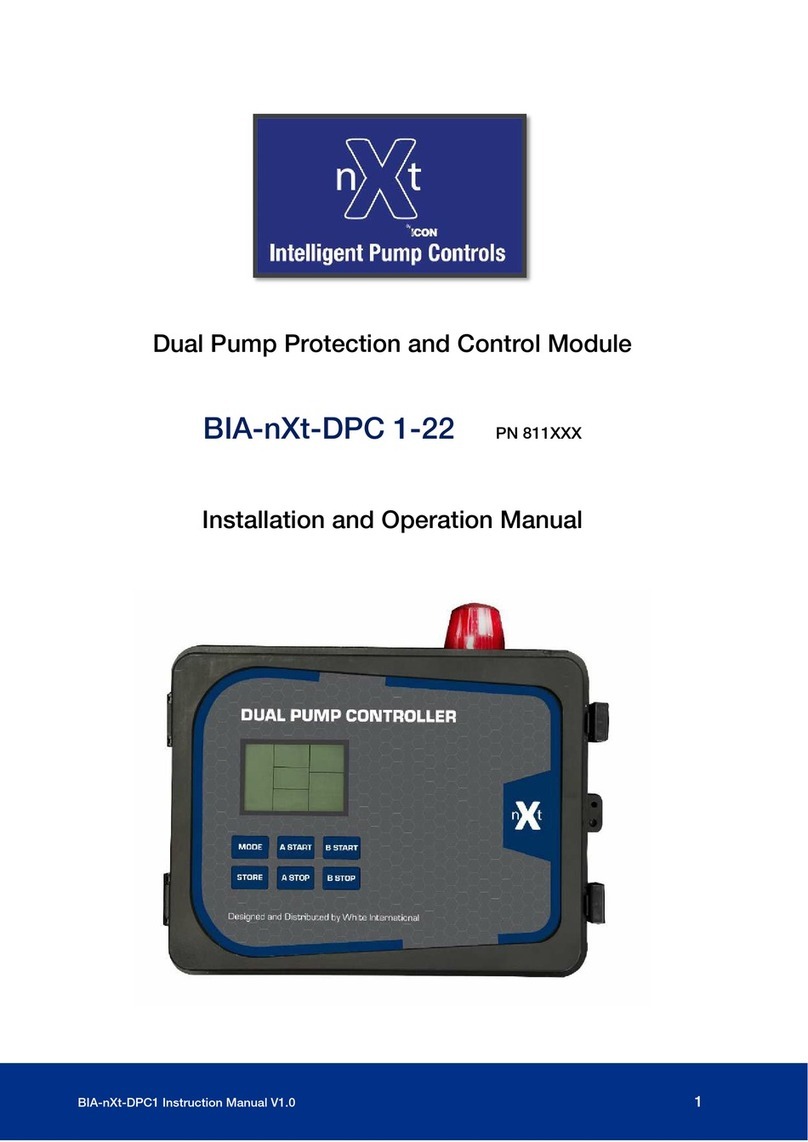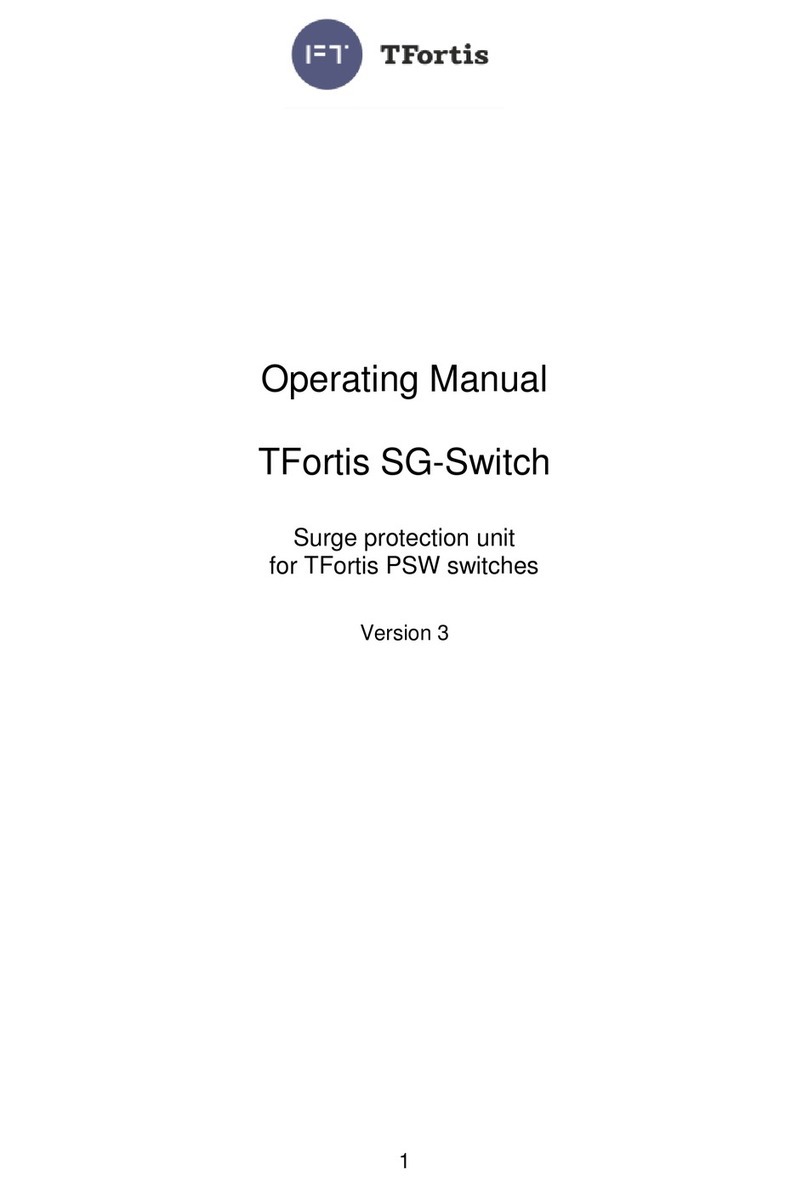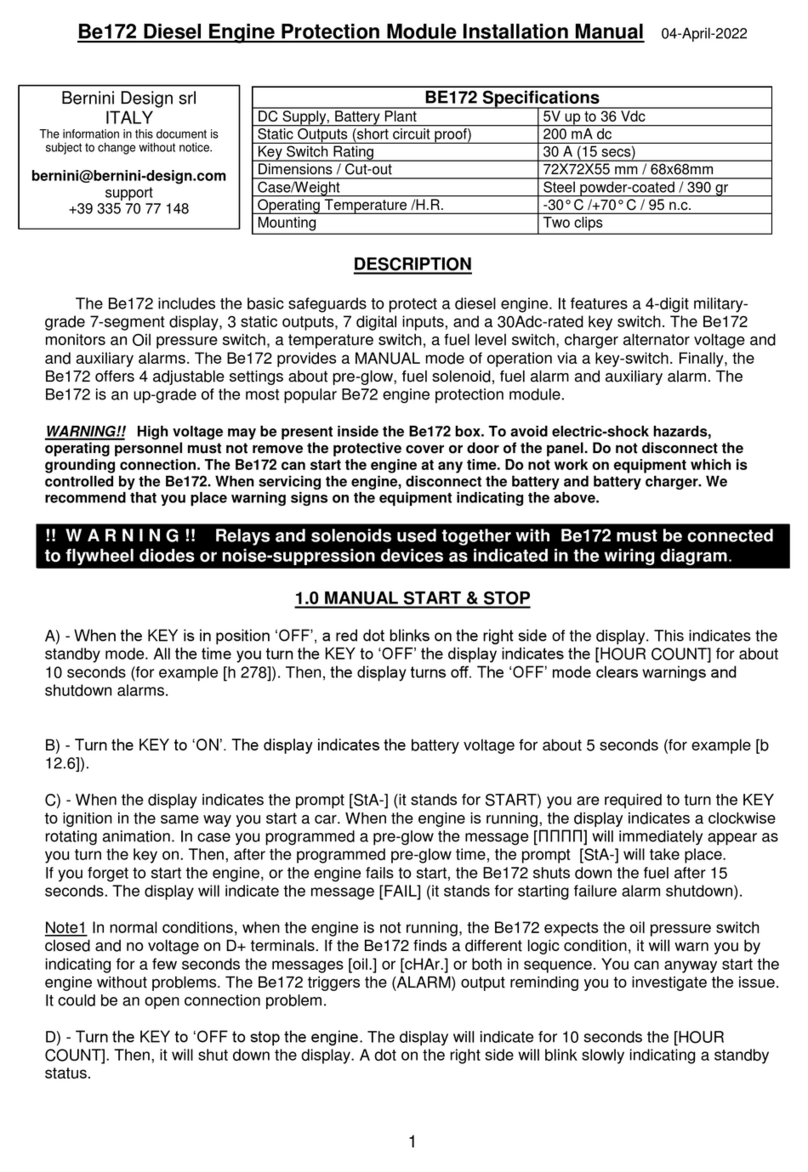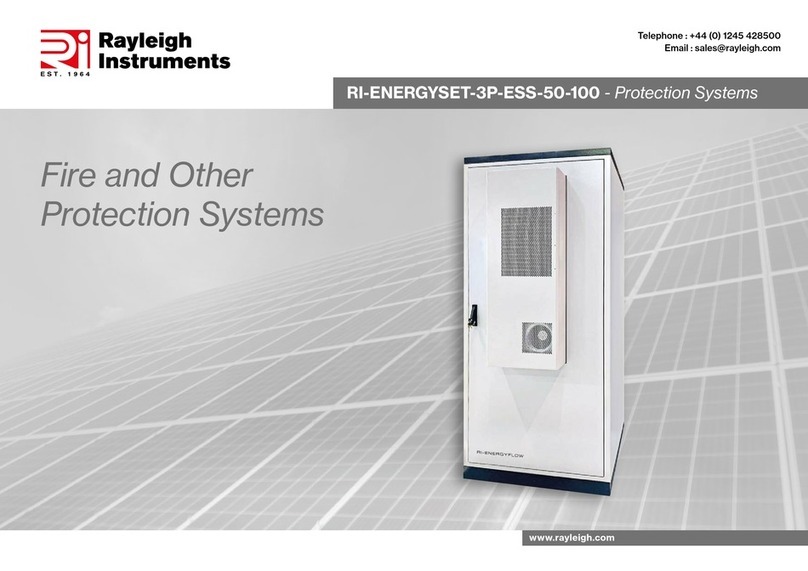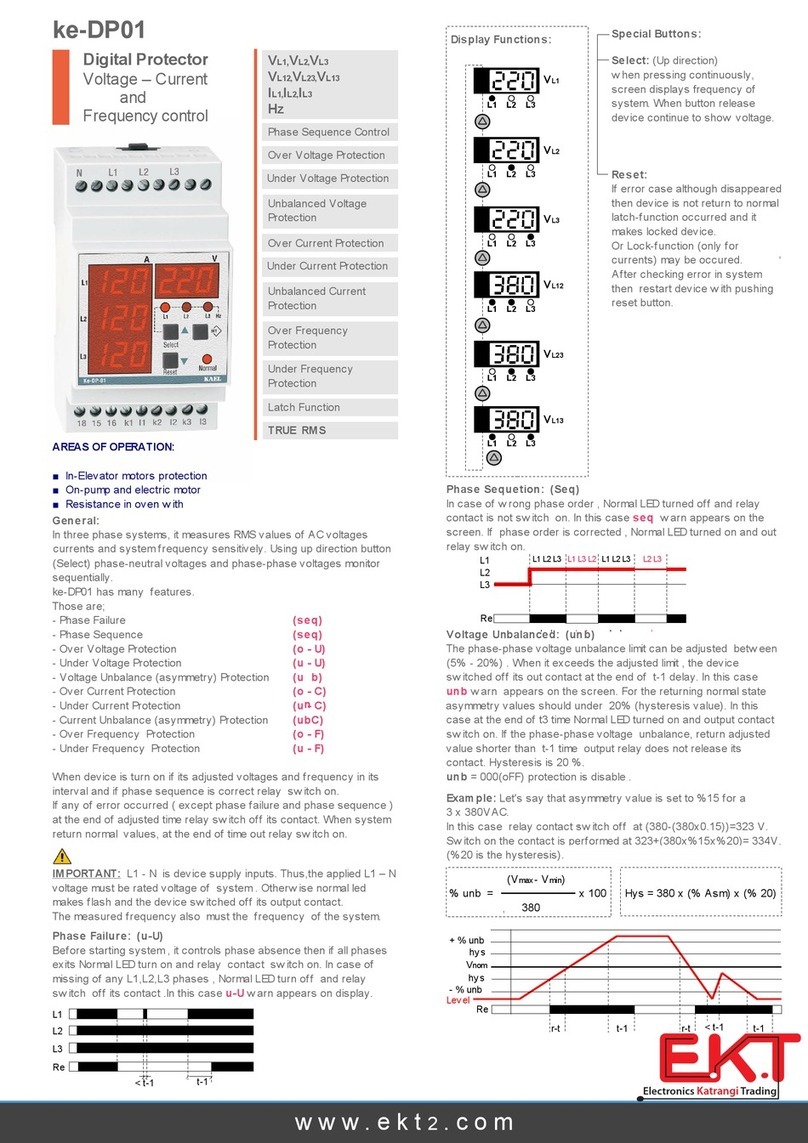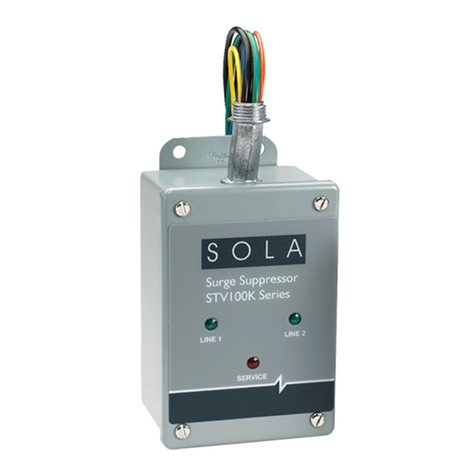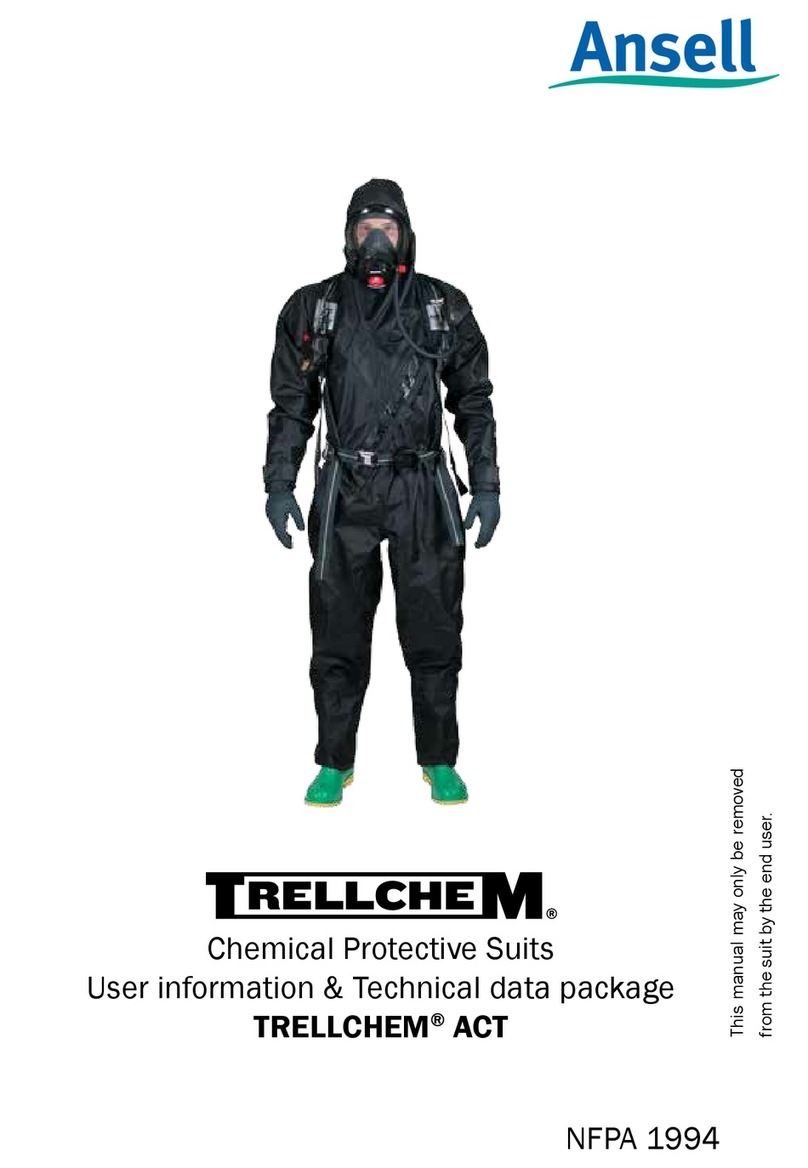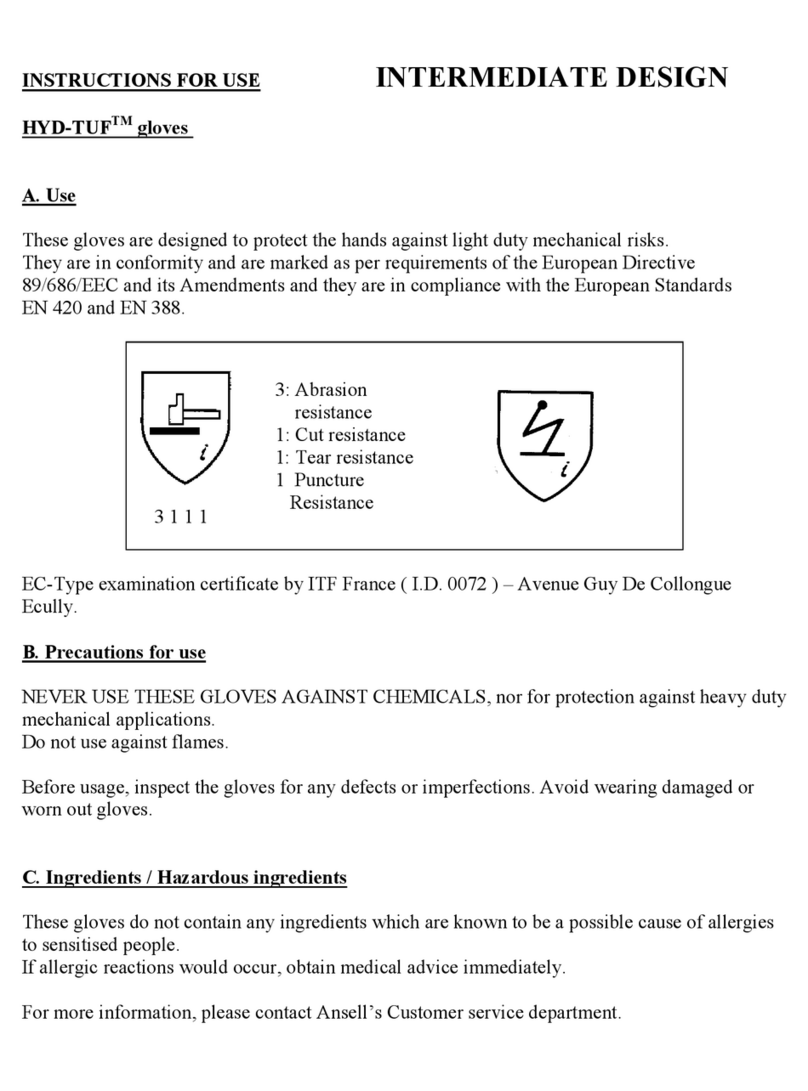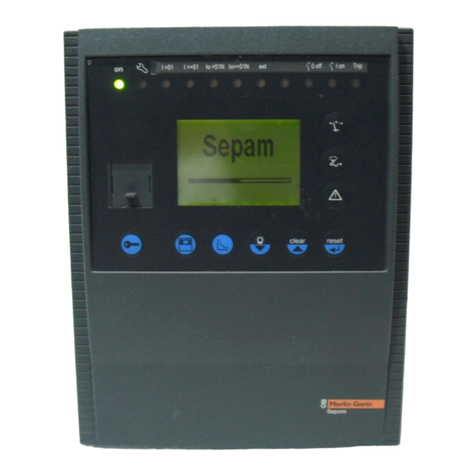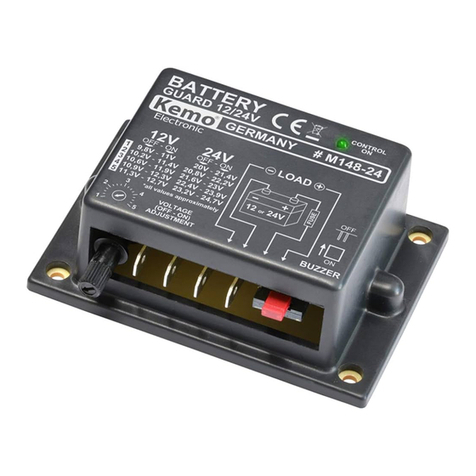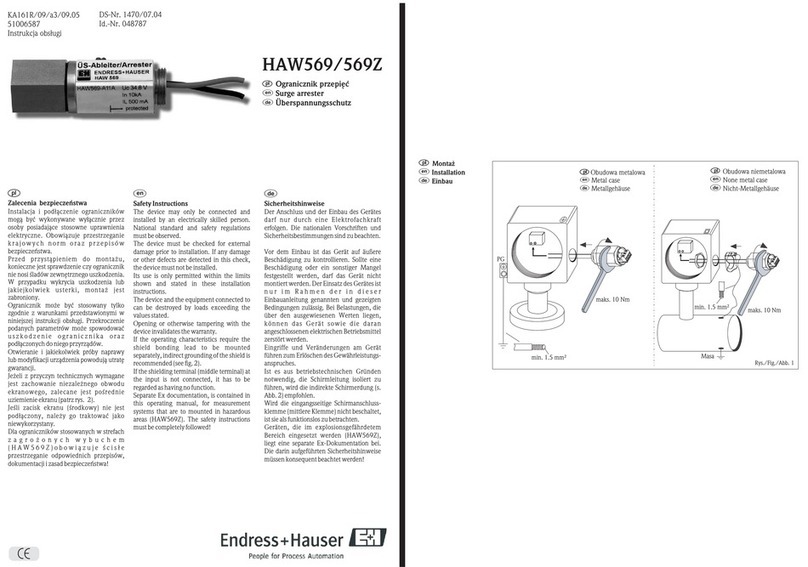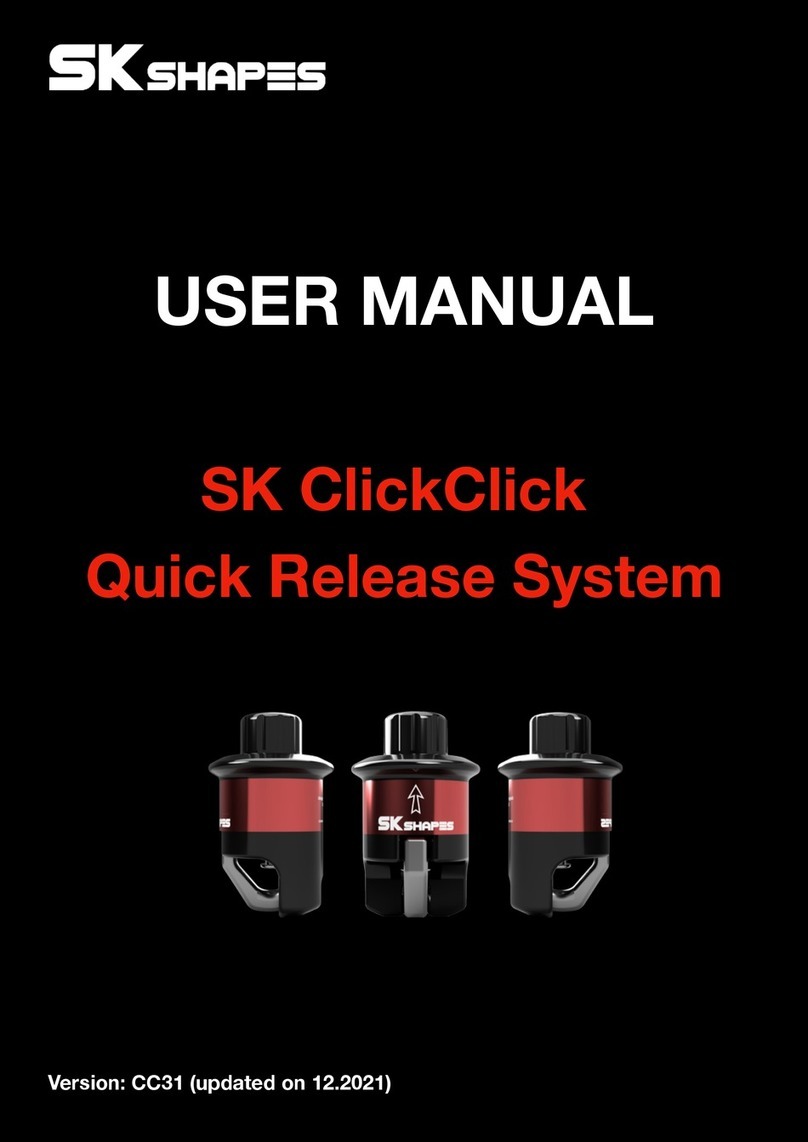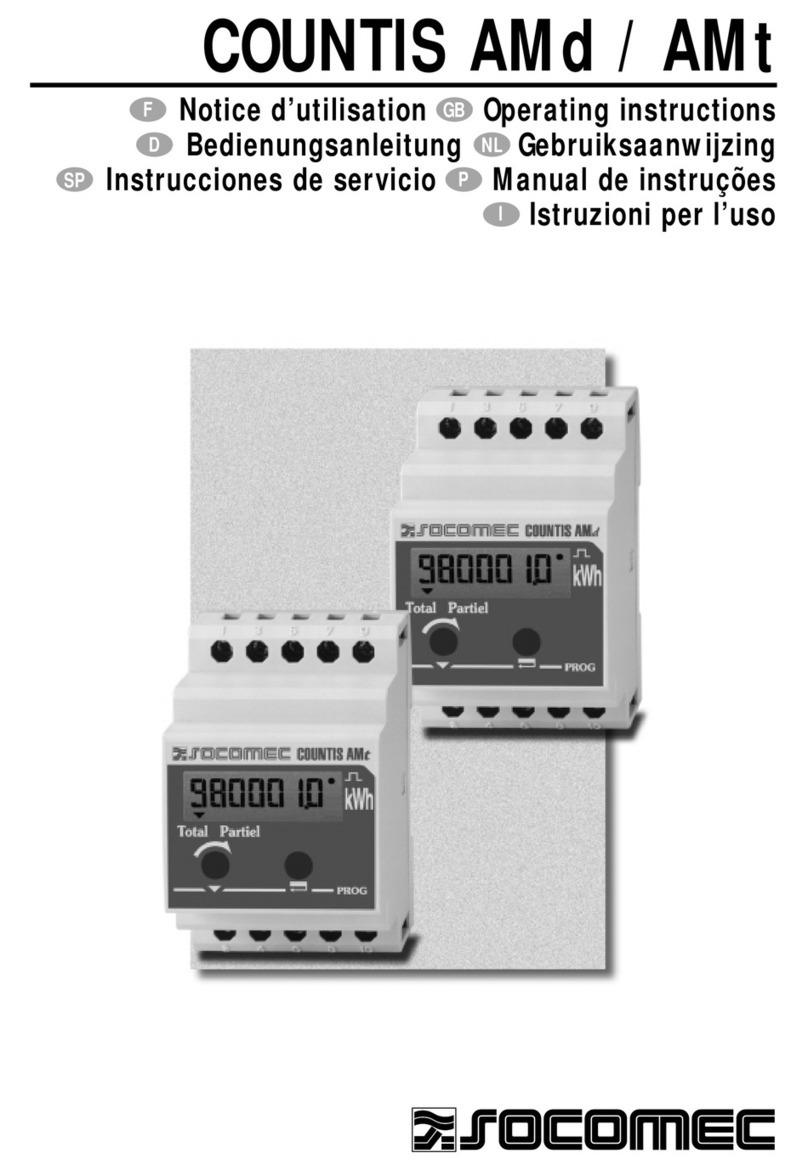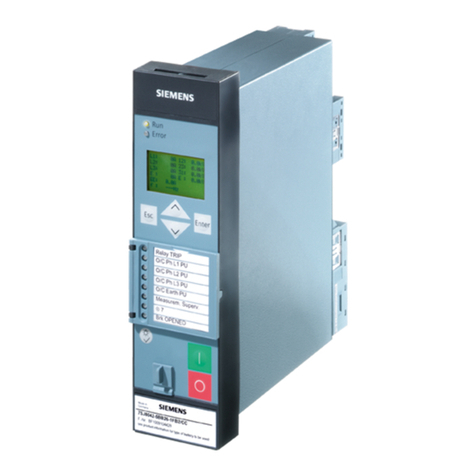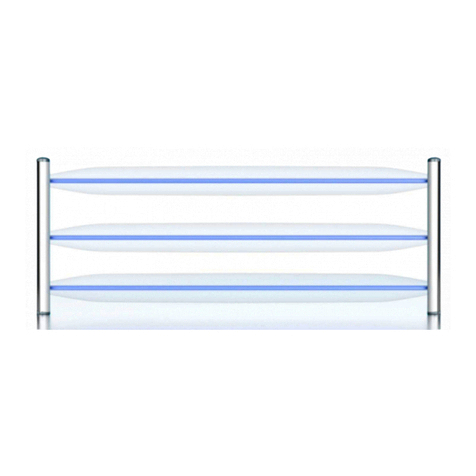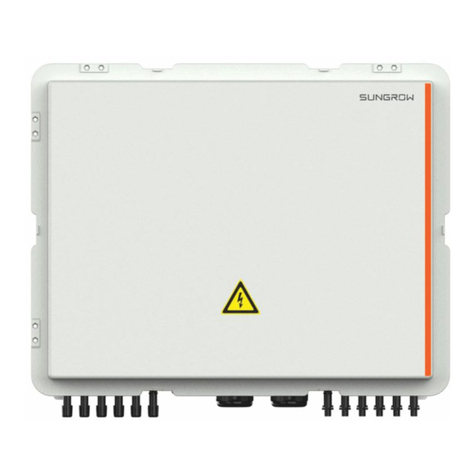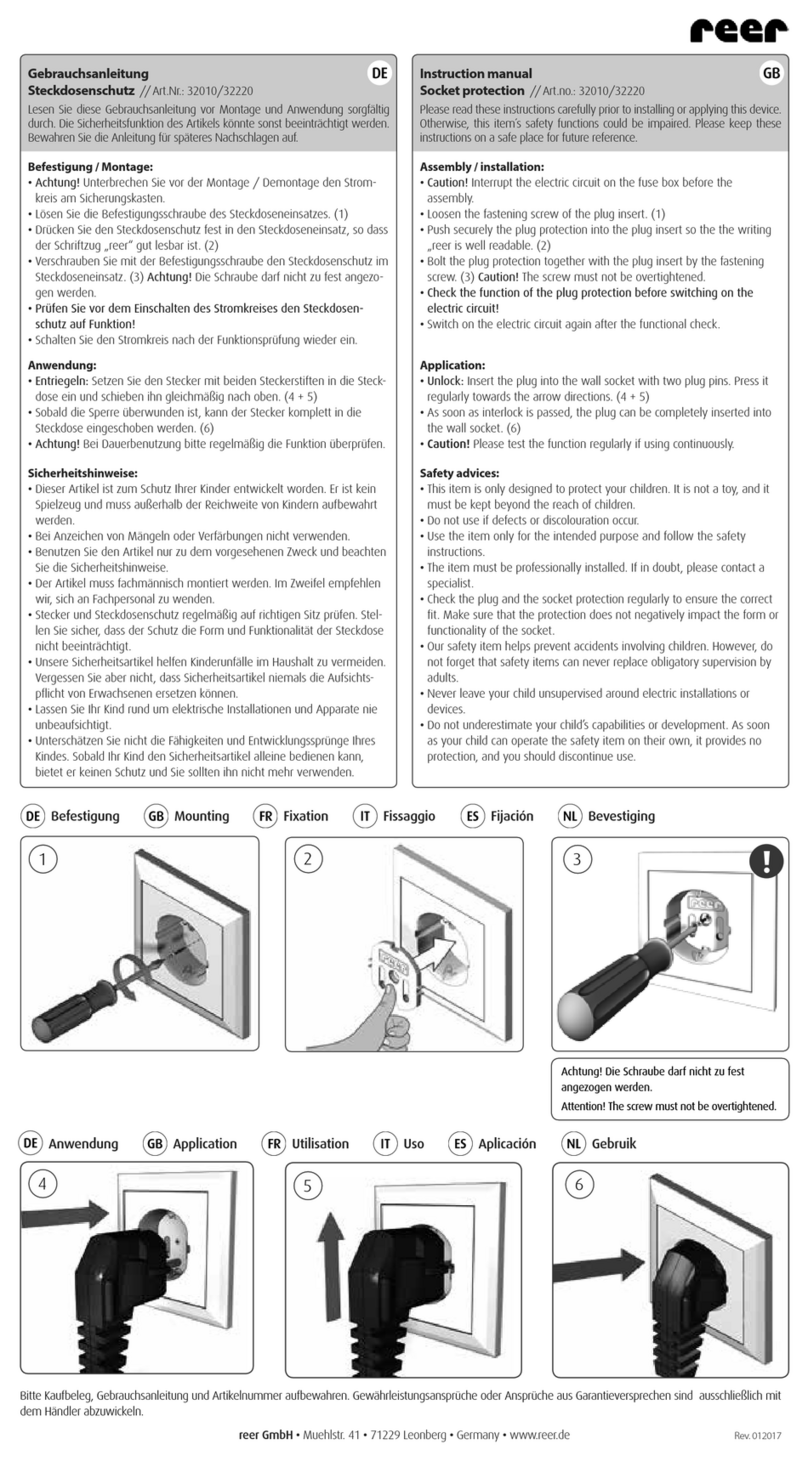
CONTENTS
1. Safety considerations.............................................................................. 5
1.1 Denitions of signal icons used in the instructions.......................... 5
1.2 Denitions of pictograms used on the suit label............................... 6
2. Description of suit..................................................................................... 7
3. Approvals ....................................................................................................... 8
3.1 European EC Type approval........................................................................... 8
4. Proper use...................................................................................................... 9
4.1 Intended use............................................................................................................. 9
4.2 Limitations of use .................................................................................................. 9
4.2.1 Antistatic properties ........................................................................................................... 9
4.3 Temperature of use.............................................................................................. 9
5. Pre-use ...........................................................................................................10
5.1 Donning.....................................................................................................................11
5.1.1 Hood adjustment............................................................................................................... 11
5.1.2 Fitting the face piece....................................................................................................... 12
5.1.3 Donning the suit ................................................................................................................. 12
6. In use...............................................................................................................14
7. After use........................................................................................................15
7.1 Initial decontamination...................................................................................15
7.2 Taking off the suit................................................................................................15
7.3 Final decontamination.....................................................................................15
8. Storage...........................................................................................................16
8.1 Storage conditions..............................................................................................16
8.2 Storage methods..................................................................................................16
8.3 Shelf life.....................................................................................................................16
9. Maintenance ..............................................................................................17
9.1 Maintenance schedule.....................................................................................17
9.2 Visual inspection of suit ..................................................................................18
